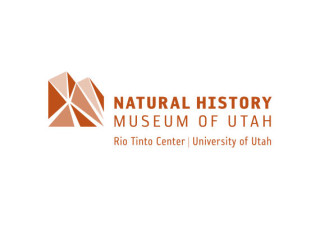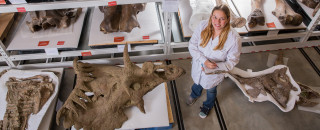
©Mark Johnston/NHMU
Paleontology
Paleontology is the study of ancient life by examining the fossil record. The Museum's paleontology collections comprise nearly 30,000 catalogued specimens, including over 20,000 vertebrate, 5,000 paleobotanical, and 2,000 invertebrate fossils. A “specimen” can be as small as a single-celled organism or as large as an entire fossilized skeleton. Our collections are focused primarily on Utah fossils and adjacent areas of the Intermountain West, and we are the official state repository for fossils found on Utah state lands.
Most people think of dinosaurs when they hear the word paleontology, and we have many fine specimens from the Late Jurassic and Late Cretaceous periods. In fact, we have the largest collection of the dinosaur Allosaurus (our State Fossil) in the world! But paleontology includes more than animals with backbones. Our invertebrate fossil strengths include soft-bodied specimens from the Cambrian of western Utah (alien-looking ancestors of aquatic creatures we know like sponges, trilobites, and jellyfish) and ammonoids from the Carboniferous of Nevada. Also, our fossil plant (paleobotanical) collections strengths include Late Triassic and Eocene specimens.
We care for our specimens in a climate-controlled space at NHMU, where they are actively used by researchers from around the world. We also maintain a digital database of important contextual information for the specimens, like where, when, and by whom they were found, as well as the era, rock strata, methods used to prepare the fossil, and much more. We cast replicas of many fossils and use these in school programs and public outreach exhibits. We also digitally scan them and use 3D visualizations in educational programming like Research Quest.
Volunteers are a key part of our paleontology team. They help in the field (prospecting for new sites and excavating fossils we find), in the fossil preparation lab (removing rock material from around the fossil and stabilizing it with adhesives), and in the collection itself (curating the material, putting information in the database, and photographing specimens). Contact us if you’d like to be a part of the team!
Like other areas of the museum, our paleontologists also conduct active research. Some of their projects include understanding how ecosystem changes as reflected in the fossil record were affected by climate change. Our collections grow because of research projects, but they also support science by being available to researchers from around the world.
DID YOU KNOW...
The museum's paleontology collections contain fossils ranging from microscopic single-celled organisms to giant dinosaur bones!
Paleontology Collection Highlights
-
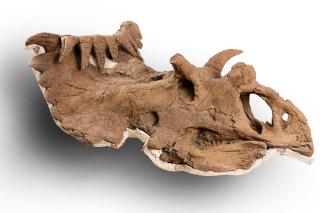
Horned dinosaur skull (holotype) – Kaiparowits Formation, Cretaceous Period, Utah
Kosmoceratops richardsoni, means ‘ornamented horned face’, and this horned dinosaur lives up to its name! With a horn on its nose, a horn over each eye, a horn out of each cheek, and ten horns on its frill (the back of the skull), this dinosaur has been nicknamed the “horny-est dinosaur ever!” It was discovered in 76 million year old rocks in Grand Staircase-Escalante National Monument.
Catalog #: UMNH VP 17000
-
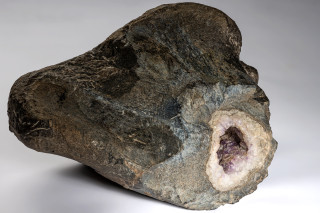
Theropod dinosaur leg bone with amethyst – Morrison Formation, Jurassic Period, Utah
This is a truly spectacular fossil. It is an upper leg bone of the meat-eating dinosaur Allosaurus that has been fossilized with amethyst crystals inside, like a geode! Usually fossils infill with clear/white quartz crystals, but this fossil fossilized with trace amounts of iron in the quartz, forming the pretty purple variety called amethyst. Fossils have also been found with calcite, pyrite, turquoise and opal.
Catalog #: UMNH VP 21351
-
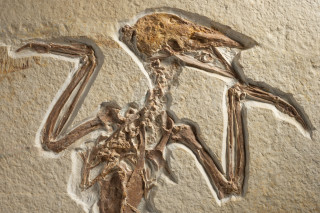
Bird skeleton – Green River Formation, Eocene Epoch, Wyoming
This exquisitely preserved fossil bird is approximately 50 million years old, from ancient lake deposit famous for their fossil fish. This specimen is preserved from the chest up, including tracheal rings, or windpipe, running down its neck. It’s rare for soft tissue like this to fossilize. This specimen is likely a new species of bird unknown to science, related to modern swifts and hummingbirds.
Catalog #: UMNH VP 29429
-
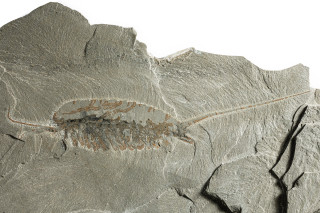
Soft-bodied arthropod - Wheeler Formation, Cambrian Period, Utah
This 500 million year old complete creature is an early arthropod animal. Emeraldella brutoni is a distant relative of both extinct trilobites and living millipedes, centipedes, and crustaceans. It has an impressively long spine extending from its rear end. Prior to the discovery of this specimen in Utah, this species had only been found in the Burgess Shale of Canada.
Catalog #: UMNH IP 3849
-
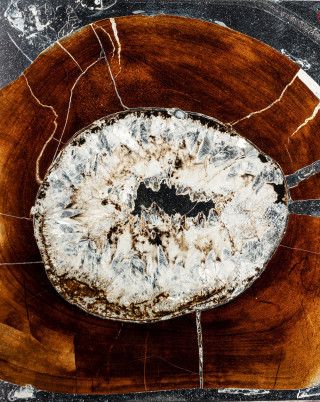
Theropod dinosaur femur thin section – Morrison Formation, Jurassic Period, Utah
This is a microscope slide, or thin section, of an upper leg bone of the meat-eating dinosaur Allosaurus. Cutting up a dinosaur bone to create a thin section can help paleontologists learn more about the dinosaur’s life. Like trees, bone tissue lays down rings that record the life history of the animal. The bone tissue preserves clues to the animal’s metabolism, the rate of growth, the age of sexual maturity, and how old the animal was when it died.
Catalog #: UMNH VP 7883.1
-
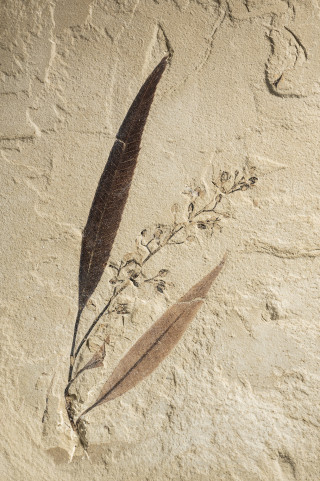
Willow leaves and flowers (holotype) – Green River Formation, Eocene Epoch, Utah
This exquisitely preserved 50-million-year-old plant fossil, Pseudosalix handleyi, isn’t just pretty to look at, it is also scientifically important as the first specimen of its species to be described. This fossil relative of modern willows has two complete leaves and numerus delicate flowers.
-
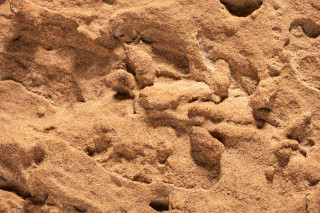
Worm burrows – North Horn Formation, Paleogene Period, Utah
This specimen of Taenidium is an ichnofossil; ichnology is the study of tracks or traces. In this case, the specimen is a fossilized burrow system with sediment backfill. Taenidium might have been created by an annelid worm. It is challenging to identify which creature made a track or trace unless they are dead at the end of the trackway or burrow, but we can often get a clue by studying modern animal traces.
Catalog #: UMNH IC 566
-
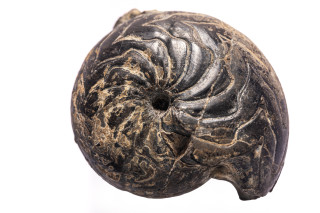
Ammonoid shell – Chainman Formation, Carboniferous Period, Nevada
Goniatites is an early member of the ammonite group, extinct shelled mollusks related to modern squid. They were remarkable engineers that built complex walled shells that could adjust buoyancy like a submarine. Goniatites deceptus and its relatives were widespread in the oceans 330 million years ago, just before the onset of a major ice age, and their fossils are prized by paleontologists for age dating of rock layers.
Catalog #: UMNH IP 3849
-
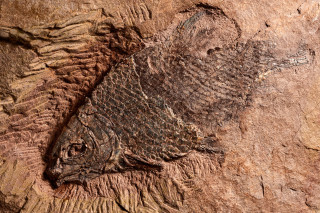
Ray-finned fish skeleton (holotype) – Chinle Formation, Triassic Period, Utah
This ray-finned fish from approximately 210 million years ago is the holotype of Lophionotus chinleana. The clearly visible features of the skull allowed paleontologists to identify it as a new species. Fish fossils are generally not rare, but really nice, complete specimens like this one from river deposits are scarce. This is because the bones and scales typically scatter in the water, or ‘disarticulate.’
Catalog #: UMNH VP 19417
-
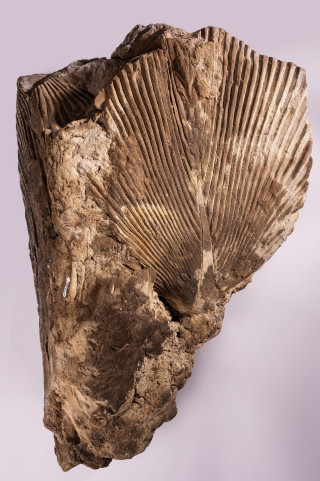
Palm frond impression – Kaiparowits Formation, Cretaceous Period, Utah
Utah doesn’t seem very tropical these days, but in the Late Cretaceous, it was beach front property! One of the ways we are able to interpret the ecosystems in which the dinosaurs roamed is by preserved fossil plant specimens like this palm frond found in Grand Staircase-Escalante National Monument. With the impressions of the rachis (spine) and each leaflet, its not hard to imagine lush green foliage.
Catalog #: UMNH PB 2084
-
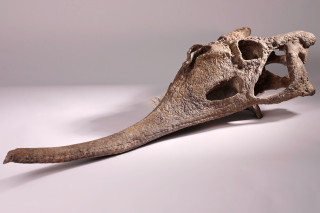
Phytosaur skull – Chinle Formation, Triassic Period, Utah
This phytosaur skull is not from a crocodile. Phytosaurs resemble crocodiles, but they are not closely related. These extinct reptiles lived over 200 million years ago) predating modern crocodylians by over 100 million years! Instead of a nose at the tip of their snout and sprawling legs like a crocodile, phytosaurs had their nose between their eyes and walked with their legs directly underneath their body. This specimen was discovered in San Juan County.
Catalog #: UMNH VP 24304
-
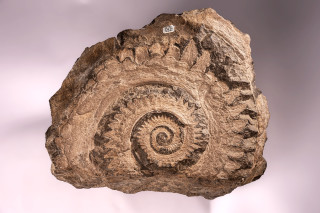
Cartilaginous fish tooth whorl – Phosphoria Formation, Permian Period, Idaho
This specimen may fool you into thinking it is a coiled ammonite, but this is actually the tooth whorl of an ancient relative of sharks, rays, and ratfish! The teeth in the middle of the coil are “baby teeth,” while the teeth on the outer whorl are the adult teeth. Unlike modern sharks, this animal never lost its old teeth. Helicoprion lived some 275 million years ago when much of the Intermountain West was covered by a shallow ocean.
Catalog #: UMNH VP 5131
-
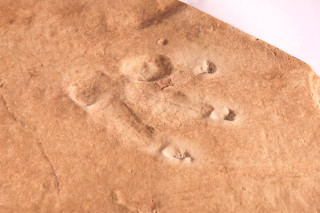
Reptile footprints – Chinle Formation, Triassic Period, Utah
When you find one fossilize track, you feel pretty lucky. When you find 4 different trackways on the same sandstone slab, you’ve hit the jackpot! This trackway in this image preserves reptile tracks named Evazoum (from a dinosaur relative). Not pictured but on the same slab are tracks of Brachychirotherium (from an aetosaur), Rhynchosauroides (from an unidentified small reptile), and Gwyneddichnium (possibly from a tanystropheid)!
Catalog #: UMNH VP 26000
-
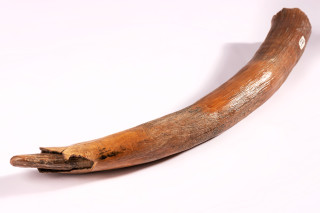
Mammoth tusk – Pleistocene Epoch, Utah
This tusk is from a juvenile Mammuthus columbi. Mammoths are extinct proboscideans that are related to modern day elephants, that lived during the ice ages. These mammoths roamed the shores of Utah’s Lake Bonneville some 20,000 years ago. These animals had tusks, made of cementum and dentine/ivory, which were used for stripping bark off trees, digging plant roots, and for defense/intimidation.
Catalog #: UMNH VP 1829 & 1830
-
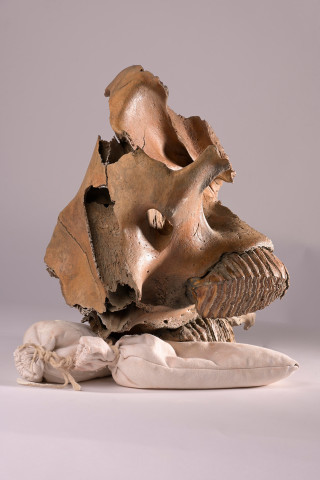
Mammoth skull – Pleistocene Epoch, Utah
This skull is from a juvenile Mammuthus columbi. Mammoths are extinct proboscideans that are related to modern day elephants, that lived during the ice ages. These mammoths roamed the shores of Utah’s Lake Bonneville some 20,000 years ago. These animals had tusks, made of cementum and dentine/ivory, which were used for stripping bark off trees, digging plant roots, and for defense/intimidation.
Catalog #: UMNH VP 1829 & 1830
-

Sphenacodon vertebrae & ribs – Cutler Group, Permian Period, Utah
This fossil of Sphenacodon is ~295 million years old, and is a close relative of the more familiar sail-backed Dimetrodon. The main difference is Sphenacodon had only a low crest along its back. Both species were carnivorous early synapsids – part of the lineage that eventually gave rise to mammals. This specimen was collected from Bears Ears National Monument.
Catalog #: UMNH VP 29724
1 of 16
Paleontology Research Staff
-
-
-
Carrie Levitt-Bussian
Paleontology & Mineralogy Collections Manager
-
Tylor Birthisel
Paleontology Preparator & Preparation Lab Manager



